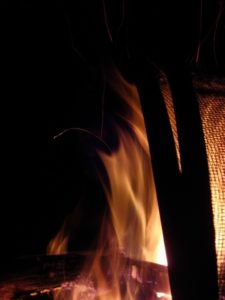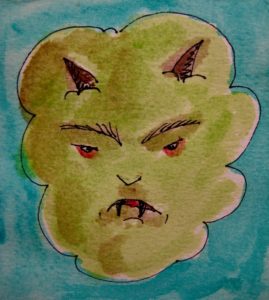
– Photo by Jan Ketchel
In our energetic origin and essence we are but a glow of awareness. We come from the light, we return to the light. From our origin as a glow of awareness we sink and are born into the dark heaviness of our human physical form and begin to perceive the world like our solid selves, as a world of solid objects. Our energetic luminescence is lost to us.
In our human form we are drawn to luminescence wherever it is reflected, a spark reminder of our lost energetic essence. This longing is the craving for union that underlies most human activity. The luminescence of our ethereal light is reflected materially in all matter of precious objects in our material world, most especially in gold and diamonds, symbols of great wealth and value, symbols of the divine that adorn the crowns of kings and queens, and closer to home in rings of commitment bestowed upon a beloved.
In the beginning, parents mirror a golden glow in their reactions to us. This loving smile validates us, gives us value. We seek out that which shines and enlivens us. Some of this mirroring validates us, some however is so powerful we see it as existing only in the person outside of us, never in ourselves. Thus, the other person is seen as the gold. Attention flowing from this luminescent other fills us with a glow. We become compulsive seekers of outside attention to merge with this experience of numinous luminescence.
Our lives on Earth have as our central mission, like the Olympian, to bring home the gold. If we can achieve perfection or notoriety we will be filled with the glow of grand attention, golden indeed. Thus perfection becomes the coveted gold, the golden standard of our worth.
Most often our vibrant energetic essence projects itself upon a golden other whom we seek to possess to recover our lost wholeness. Oftentimes the glow of this mysterious other is so powerful we are overwhelmed with anxiety in their presence. We feel unworthy of their attention or paralyzed by the glow of their beauty and majesty. An attraction of this magnitude can secretly dominate us for years.
For those able to connect with their mysterious other a magical period of glowing oneness, total blissful contentment, may be granted, if just for a little while.
In our day these romantic projections come and go rapidly as we are technologically opened to a very wide pool of possibility. Ah, what shining pearl might I find and meet tonight!
If a more lasting union prevails the shine inevitably begins to fade in the dullness of everyday life. Generally, disappointment results in expectation that the other change to restore the shine. Underneath we retain our childish experience of entitlement, wishing that the other refill our glow with their attention.
“I’m speaking, you looked away. I’m angry, deflated. Why? I was speaking; my story, my idea is golden. If you are not transfixed by what I bring it is not worthy, or you are too self-absorbed to appreciate it. I must see REFLECTED in your reaction the presence of my luminosity. Your attention verifies my worthiness.”
And what happens when a relationship ends, perhaps by death? Mourning is lost contact with our glowing other. Herein often begins a new journey, the journey to discover and recover the pot of gold at the end of our inner rainbow, our own soul, our energetic essence.
This is the journey we’ve all been on as we seek to obtain our true fulfillment, reflected as it has been in the gold of a million illusions of our materialistic accumulations, perfectionistic achievements, or soulmate relationships.
Ultimately, our definitive journey in infinity requires us to restore and become the original glow of awareness of our energetic essence. To prepare for this journey we must recapitulate all our magical experiences in this life and restore our energetic wholeness, nothing left projected upon others. And with this we become our luminous other.
Chuck




